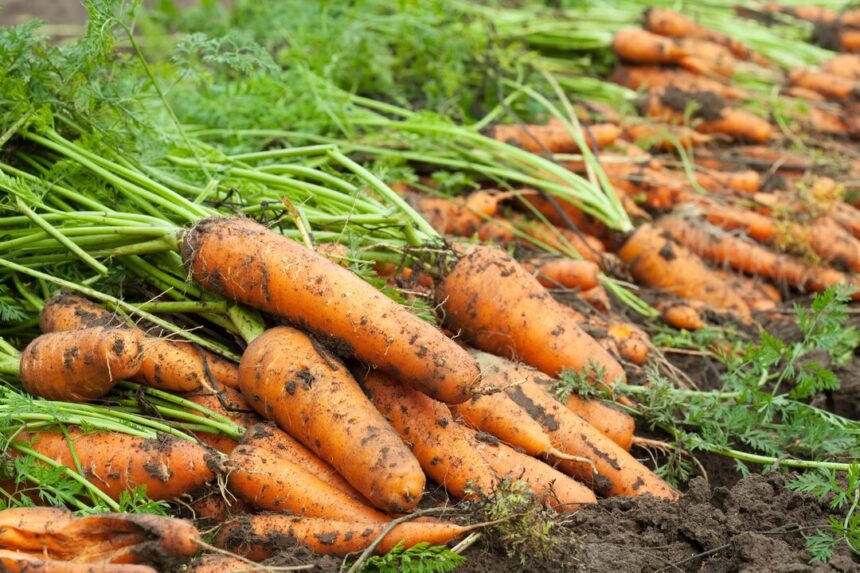Carrots are a staple vegetable in South Africa, prized for their versatility, nutritional value, and economic importance. To meet the growing demand for high-quality carrots while maximizing yield, farmers employ various techniques and strategies. In this article, we’ll explore some effective methods for enhancing the quality and yield of carrots in South Africa.
Soil Preparation and Fertility Management:
- Start with well-prepared soil rich in organic matter to provide essential nutrients and promote healthy root development.
- Conduct soil tests to determine nutrient levels and pH, and adjust fertility management practices accordingly with the application of organic compost or balanced fertilizers.
Variety Selection:
- Choose carrot varieties suited to the local climate, soil conditions, and market preferences.
- Select varieties known for high yields, disease resistance, and desirable quality traits such as color, flavor, and shape.
Optimized Planting Practices:
- Practice proper spacing and row orientation to optimize sunlight exposure and airflow, reducing the risk of diseases and improving overall plant vigor.
- Consider companion planting to enhance growth and deter pests, such as planting carrots alongside onions or garlic to repel carrot fly.
Irrigation Management:
- Implement efficient irrigation systems such as drip or micro-sprinklers to provide consistent moisture while minimizing water waste.
- Monitor soil moisture levels regularly and adjust irrigation schedules based on weather conditions and plant needs to prevent under or over-watering.
Weed Control:
- Employ effective weed management strategies such as mulching, hand-weeding, or the use of pre-emergent herbicides to suppress weed growth without harming carrot plants.
- Keep fields clean and free of weeds to reduce competition for nutrients, water, and sunlight, thereby maximizing carrot yield and quality.
Pest and Disease Management:
- Monitor crops regularly for signs of pests and diseases, such as carrot fly, aphids, or fungal infections, and implement integrated pest management (IPM) strategies.
- Utilize biological controls, cultural practices, and, if necessary, judicious application of organic or chemical pesticides to minimize crop damage and ensure healthy plant growth.
Harvesting and Post-Harvest Handling:
- Time harvesting carefully to ensure carrots reach optimal maturity, characterized by vibrant color, firm texture, and sweet flavor.
- Handle harvested carrots with care to minimize bruising and damage, and promptly remove foliage to prevent moisture loss and prolong shelf life.
Continuous Learning and Adaptation:
- Stay informed about the latest research, technologies, and best practices in carrot production through agricultural extension services, workshops, and industry publications.
- Continuously evaluate and adapt production methods based on feedback, observations, and market demands to optimize quality and yield while maintaining sustainability.
By implementing these techniques for enhancing quality and yield, farmers in South Africa can cultivate bountiful harvests of high-quality carrots to meet the needs of consumers and contribute to the country’s agricultural productivity. Through careful planning, diligent management, and ongoing innovation, the carrot farming industry can thrive, providing nutritious and delicious produce for local and international markets.
Join 'Farmers Mag' WhatsApp Channel
Get the latest Farming news and tips delivered straight to your WhatsApp
CLICK HERE TO JOIN






